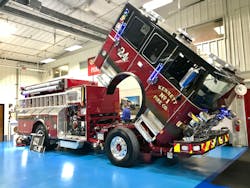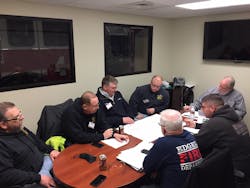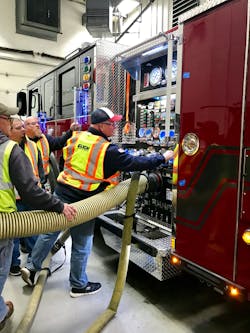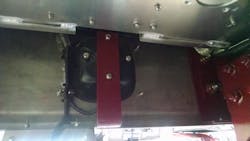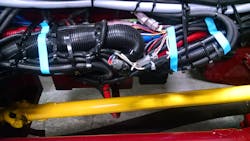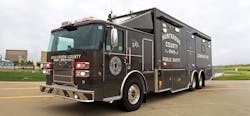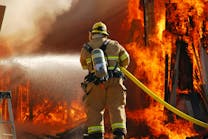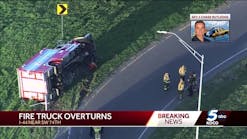During the past decade, many events have shaped the fire apparatus industry, including the EPA diesel engine emissions requirements, changes to NFPA 1901: Standard for Automotive Fire Apparatus, along with strong economic recovery from the recession of 2007 to 2009. Fire apparatus fleet replacement programs suffered due to a variety of outside forces and, as a result, many departments had to play catch-up to enhance the operational readiness of their vehicle fleet.
Market impact on deliveries
Several years back, the fire apparatus industry suffered a significant downturn in the number of both commercial and custom chassis apparatus that were sold, which resulted in fewer units built. As municipalities struggled to maintain a stable tax rate with decreasing revenues, many capital projects were placed on hold, which directly impacted new apparatus orders. In many fire departments, the result was increased maintenance and operational costs along with extended life cycle times for both front-line and reserve units. Those departments that were empowered to purchase new fire apparatus had some degree of improved buying power, with increased competition among the manufacturers along with a compressed delivery time. During this period, custom pumpers could be completed within as little as six to seven months with aerial devices taking just a few months longer.
For several reasons, due largely to manufacturing production capacity, the fire service has been accustomed to having the ability to specify and order any piece of apparatus and having it delivered within a 10- to 12-month time frame. When orders for new apparatus exceed the production capacity of the manufacturer’s facility, the result is an increase in lead time, as the number of hours required to build an apparatus cannot be compressed.
Most fire apparatus manufacturers offer stock model vehicles or ones that have been pre-engineered with a limited number of options, which can provide for shorter delivery times. While these units fill a needed void in the overall apparatus market, many departments are reluctant to acquire a stock model apparatus as a short-term solution to address their fleet shortfalls for fear it will create long-term fleet problems.
We need to consider the reality of accurate projections for the time required to produce a custom chassis fire apparatus with over 1,000 options and variations that need to be engineered and built to a single customer’s requirements. Departments that operate large apparatus fleets of engines, trucks and special units have achieved a degree of standardization in the major components, including drive train, axles, suspension and other chassis equipment. Dashboard and pump panel layouts are similar to enhance vehicle familiarization and training and, from year to year, minor enhancements are made to reduce vehicle downtime and warranty costs.
With all this in mind, let’s review the time needed to process an order for a custom chassis pumper from any manufacturer.
Preconstruction discussions
When the order is received internally by the manufacturer, one or more persons will review the contract specifications and requirements and have the different engineering groups address specific questions regarding the configuration and components in each area.
Prior to the preconstruction conference, the customer receives a list of questions that they need to prepare. In addition, the fire department should be ready to do the following:
- Review the planned equipment inventory, including weight and location on the apparatus;
- Review the manufacturer’s weight analysis, electrical load analysis and engine performance scans;
- Determine locations for cab-mounted equipment and review dashboard layout;
- Review left- and right-side pump panel layouts; and
- Determine location of all body compartment equipment.
The preconstruction meeting generally requires two days of intensive work to review all aspects of the apparatus design and configuration with department personnel, including one person who is designated to approve items that would impact the contract cost. Only after this work is completed, with approved change orders, will the apparatus then proceed to have the major components—engine, transmission, axles, fire pump and water tank—ordered as needed. The lead times for these components can vary based upon the respective supplier’s production capacity and backlogs.
Shortly after the preconstruction meeting, the production specifications and revised blueprints will be available for review and sign-off by the department. Now the actual production and release of the vehicle to manufacturing can begin.
Purchasing groups
Many departments are using nationally recognized purchasing groups, such as the Houston-Galveston Area Council (HGAC) and Sourcewell, which can provide the opportunity to choose a specific apparatus builder and model of vehicle for the procurement process. When compared to the traditional municipal bidding process, the design of the apparatus is determined cooperatively between the sales person and the apparatus committee. This process can reduce the amount of time required to develop a bid specification and go through the normal procurement process. However, this does not eliminate the need for the committee to review and understand each aspect of the apparatus design and impact of the overall cost.
Time frame expectations
The department’s apparatus committee, or those charged with developing the specifications for any new vehicle, should be ready to accept a realistic delivery time from the preferred manufacturer. Keep in mind that if the anticipated life cycle for the new pumper is 15 years, it really doesn’t make a difference if the delivery time required to produce the apparatus is 14 months compared to 11 months. Considering the degree of complexity and details required to design, engineer and build a custom fire truck that will meet the needs of the department for years to come, a little extra time up front will pay dividends in the end.
Inspection time
Some departments require a mid-point inspection to address key issues with chassis and body components prior to final assembly. These inspections can review and validate chassis wiring and air line installations, fire pump piping and body fabrication for compliance with specification requirements and general workmanship. Areas of concern can be corrected more easily, with less disruption to the manufacturing schedule. If there are components requiring access for maintenance and inspection, these can be addressed with the manufacturer. All deficiencies and issues should be written with the planned corrective action agreed to with all parties at the conclusion of the inspection.
The most critical area of the apparatus procurement process is the final inspection and how this inspection is conducted by the fire department. It is unrealistic to expect that the completed apparatus is going be to be found without fault; however, the inspection process should be comprehensive and methodical in how the different areas on the vehicle are inspected. Remember to bring your list of mid-inspection items to make sure they have been resolved.
Prior to arrival at the plant, the committee should have a detailed list of components that need to be checked for compliance and operation, including functional testing of pump, lighting and electrical systems. Vehicle weights and testing documentation conducted prior to the final inspection should all be available for review. Finally, all principal vehicle dimensions, including wheelbase, overall height, overall length and hosebed height from the ground, should be validated.
Arrangements should be made ahead of time to have the apparatus taken to the pump test facility to conduct a brief service test as well as flow tests through discharges that will support preconnected attack lines. If the apparatus is equipped with a foam system, a test of these components using a water dye in the foam tank should be conducted. Departments with large apparatus committees may consider taking portions of the vehicle specifications and breaking down the vehicle into subject areas, such as chassis, cab and interior, pump and generator, body compartments along with vehicle paint and graphics, with one or two persons reviewing each of these areas for compliance.
One member of the committee should be charged with documenting any issues in writing along with photos of specific areas that may be difficult to describe. A cell phone with good picture-taking capabilities may be helpful here. Beyond having these areas addressed with personnel from the manufacturer, the department should have identified within their specification boiler plate specific details on the terms for delivery and acceptance for the new apparatus.
Apparatus manufacturers will normally provide a specific time frame for the department to take delivery of the apparatus and provide final payment of the contract price. Again, these details need to be spelled out and understood by all parties prior to entering into a contract. Do not rely on factory testing; you must do an NFPA acceptance test in your jurisdiction. Also weigh the apparatus in accordance with NFPA 1911: Standard for the Inspection, Maintenance, Testing, and Retirement of In-Service Emergency Vehicles before you pay!
The result of a well-detailed preconstruction conference and specific boilerplate language that favors the interests of the department will result in a problem-free final inspection and reward the previous efforts throughout the procurement process.
Final thoughts
The current economic climate has impacted the budgets required to support new apparatus acquisitions. A combination of increased raw materials and manufacturing costs, along with increased production lead times, have impacted the bottom-line cost for many types of vehicles. Department fleet managers need to be able to present a multi-year plan with realistic budget numbers to fund the replacement program.
